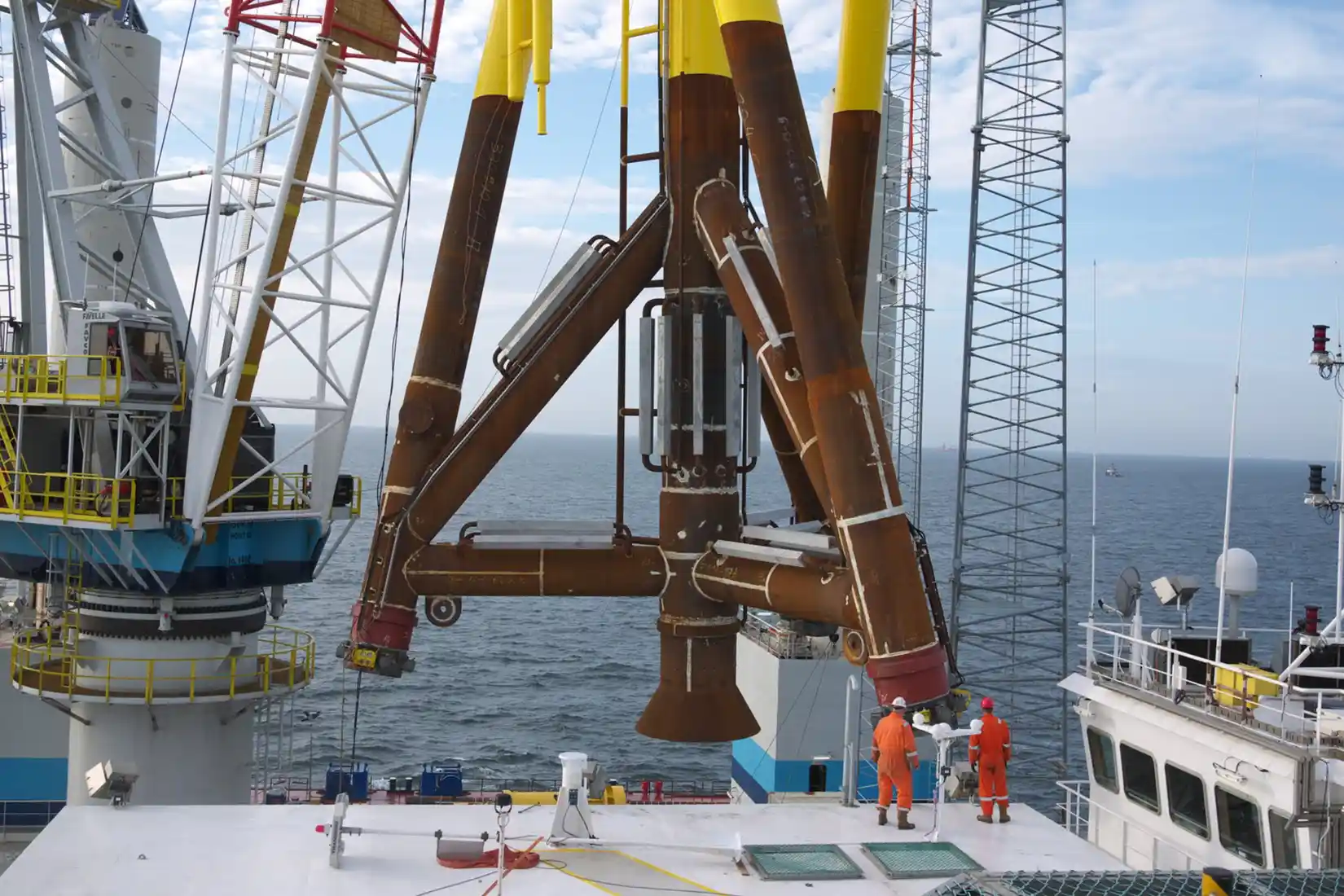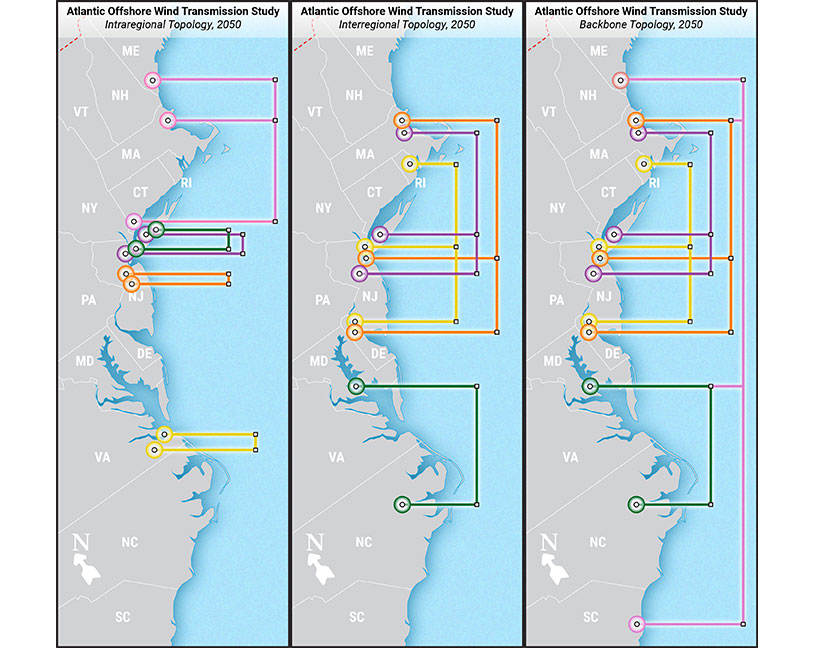Atlantic Transmission Study
A study co-led by NLR evaluated coordinated solutions that would support energy transmission along the U.S. Atlantic Coast, addressing gaps in existing analyses.

The Atlantic Transmission Study (executive summary) identifies and compares transmission strategies along the U.S. Atlantic Coast, from Maine through South Carolina. Ensuring adequate, affordable, and timely transmission access can support growing energy needs in some of the most populated locations in the United States.
The study evaluated multiple pathways for coordinated transmission solutions along the U.S. Atlantic Coast in the near term (by 2030) and long term (by 2050) under various combinations of electricity supply and demand while supporting grid reliability and resilience and ocean co-use.
The study fills gaps in prior analyses by providing a multiregional planning perspective that incorporates environmental, ocean co-use, and other siting considerations into defining potential offshore transmission routes. The study also compares multiregional offshore transmission topologies and their associated costs and benefits. In addition, the team analyzed reliability impacts from a multiregional perspective.
The study helped inform the Atlantic Offshore Wind Transmission Action Plan. Researchers from NLR and Pacific Northwest National Laboratory conducted the study, funded by the U.S. Department of Energy Wind Energy Technologies Office.

The intraregional, interregional, and backbone topologies investigated, each representing different potential offshore networks. Illustrations by Billy Roberts, National Laboratory of the Rockies
Project Objectives
The study was designed to:
- Identify scenarios and pathways of transmission topologies (such as radial lines, backbones, or a meshed network), sequencing, and build-out in U.S. Atlantic waters from 2030 through 2050
- Analyze impacts, such as economics, wind curtailment, and reliability, of multiple scenarios
- Characterize and compare transmission technologies for the different scenarios as well as cost and benefit trade-offs for high-voltage alternating current and direct current technologies
- Evaluate operational, environmental, reliability, and resilience considerations of various transmission topologies
- Collect data and develop models that are readily usable by the energy industry for conducting analyses and studies.
All activities closely engaged with and drew expertise from a technical review committee, which provided input throughout the project on assumptions, scenarios, and the modeling framework.
Key Findings
Key findings of the study suggest that offshore transmission networks:
- Can be planned while considering ocean co-uses and environmental constraints
- Can reduce curtailment and usage of higher-cost generators
- Contribute to grid reliability by enabling resource adequacy and helping manage the unexpected loss of grid components (contingencies)
- Offer benefits that outweigh the costs, often by a ratio of 2 to 1 or more (especially with interregional interlinks, which provide the highest value)
- Can help reduce development risk when built in phases, but early implementation of high-voltage direct current technology standards is essential for future interoperability.
Frequently Asked Questions
Contacts
Share
Last Updated Dec. 6, 2025
